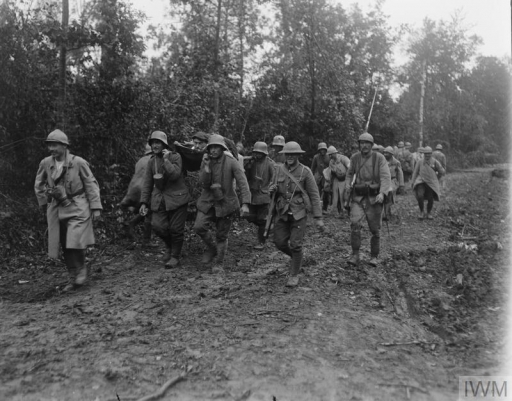Battles in northeastern France 100 years ago signalled a crucial shift in the First World War, as the Allies gained the advantage over the Germans.
Once more, the River Marne provided a ‘turning point’. This was where the forces of France and Britain had checked the German armies on the approach to Paris in the autumn of 1914.
Four years later, another Allied counter-attack, this time supported by thousands of newly-arrived US troops, saw off Germany’s last offensive of the war.
The Second Battle of the Marne began on July 15 with German assaults either side of Reims. It was the latest of Erich Ludendorff’s campaigns to split the French and drive towards Paris, isolating the British in preparation for another attack in Flanders.
The offensive east of Reims failed, not least because the French had intelligence of German intentions, enabling them to launch a pre-emptive bombardment. The Germans then ran into well-prepared defences.
But progress was made to the west, where German troops succeeded in getting across the Marne and establishing a bridgehead on the south bank at Dormans.
An American unit, the 3rd Infantry Division, earned the nickname ‘Rock of the Marne’ for its stubborn stand at nearby Chateau-Thierry.
By July 17, Germany’s last offensive on the Western Front had been contained. The Allied Commander-in-Chief, Ferdinand Foch, was ready to strike back immediately, using French armies with American, British and Italian support.
Multiple attacks opened on July 18, now embracing a crucial element of surprise. There was hardly any warning of the customary opening bombardment. Significant advances followed. On July 20, the Germans started withdrawing to the Aisne, giving up the gains of their earlier offensives.
In September 1914, the German retreat from the Marne had signalled the start of trench warfare and more than three years of deadlock on the Western Front.
Events following the Second Battle of the Marne in the summer of 1918 would have a very different outcome. General Foch sensed the opportunity, telling the British, French and US army chiefs on July 24, that it was time for the Allies to return to the offensive.
The plan was to deliver a succession of blows across Northern France. It started with a British-led operation at Amiens on August 8. Collectively called ‘The Hundred Days Offensive’, the attacks culminated in victory in November.
Read more here in Centenary News about America’s part in rolling back German forces.
Sources: Wikipedia/various
Images courtesy of Imperial War Museums, © IWM Q 11099
Posted by: CN Editorial Team
